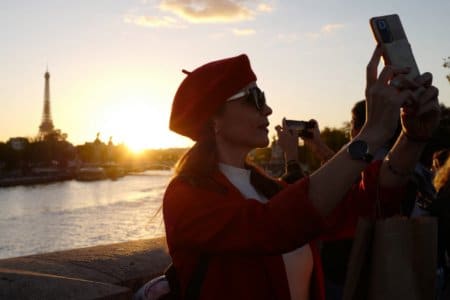
There is bad news if you are an international student in the United States on an M-1 visa and hoping to work. You could be deported for violating the terms of your visa.
Visas are complicated enough. There is paperwork, interviews, a healthy amount of stress, and did we mention paperwork?
Currently applying for my visa for the US and my #semesterabroad. Never seen so much paperwork. But it'll be so worth it 😉
— Janina L (@JustNinaHere) May 19, 2015
But knowing what you can and cannot do with your visa is vital. Part-time work is necessary for many students to support their studies. But can you work with your visa?
If you have an F-1 visa, you may be eligible to work during your studies but only under certain conditions. You must meet the complex guidelines and restrictions issued by the US Citizenship and Immigration Services (USCIS). However, those with M-1 visas are not allowed to undertake a job while they are in the US.
You will need an M-1 visa if you are attending a vocational or other ‘nonacademic’ institution to study. For all other means of study you will need an F-1 visa.
my appointment at the US embassy is so soon i just wanna get my student visa and get this over with
— malak (@muhlaak) October 3, 2017
Employment on-campus is the most freely permitted form of work by the USCIS regulations, so much so that it does not even require USCIS approval.
However these jobs are few and far between. Students are unable to undertake on-campus work during their first semester, or sometimes even their first year. The International Student Office is also often required to grant you permission before you are able to accept on-campus employment.
If you are lucky enough to secure a job, the rules include working a maximum of 20 hours a week and only working full-time during the Christmas, Easter and summer breaks.
Students with F-1 visas also have various training opportunities, whereas those with M-1 visas do not. Those with F-1s are able to undertake pre-completion optional practical training (PT), but those with M-1 visas are only able to access one type of PT employment.
https://twitter.com/longlivethefloe/status/923552116064620544
This is available to M-1 students only after completion of their vocational program. It is designed to give students training experience in their vocational sector.
The PT must be recommended by a designated school official (DSO) and authorized by the USCIS. Working without authorization will violate your visa, causing you to fall out of status, resulting in you losing the right to be in the US.
If you are a new student applying for F-1 and M-1 visas, your visa can be issued up to 120 days in advance of your course start date. While you may receive your visa long before you are due to begin studying, you will not be able to enter the US with either an F-1 or M-1 visa until 30 days before your studies begin.
The rules are always subject to change, so make sure you check before you travel.
Liked this? Then you’ll love…
Why it’s still safe for you to study in the US despite gun epidemic
Top 10 weirdest questions that have been asked about accommodation








